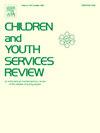Cyberbullying and cyberhate as an overlapping phenomenon among adolescents in Estonia and Spain: Cross-cultural differences and common risk factors
IF 2.4
2区 社会学
Q1 FAMILY STUDIES
引用次数: 0
Abstract
We present research conducted in the framework of the European project H2020 RAYUEALA on cybercrime and minors with the aim of analyzing the prevalence of and relationship between cyberbullying and online hate speech among adolescents in two different areas of Europe (Spain −South- and Estonia −North-).
We implemented a representative survey in the region of Madrid (Spain, n = 682) and Estonia (n = 415) with a stratified probability sampling method. We analysed frequencies together with a bivariate analysis and logistic regression.
The results show a similar general prevalence in cyberbullying victimization, but online insults were more common in Estonia and account takeover and exclusion from a group were more common in Spain. However, online insults, racism, and LGTBIphobia had a higher difference in perpetration prevalence in Estonia. While common risk factors for victimization were being a female, being LGTBI, and spending more than three hours online, the leading risk factor for perpetrating was being male. Finally, there was strong overlap between being a cyberbullying and a cyberhate offender.
We suggest some potential explanations for these differences: the extent of technological implementation in the region and the time spent online, information provided in the school and at home, and culturally predominant racism and LGTBphobia. The overlap between being a cyberbullying and a cyberhate offender, the gender- and sexual orientation-related risk factors, and the regional differences in prevalence show the importance of addressing the social and cultural aspects of online violence and the importance of social inequalities and power imbalance.
爱沙尼亚和西班牙青少年中的网络欺凌和网络仇恨重叠现象:跨文化差异和共同风险因素
我们介绍了在欧洲H2020 RAYUEALA项目框架下进行的关于网络犯罪和未成年人的研究,目的是分析欧洲两个不同地区(西班牙-南部和爱沙尼亚-北部)青少年中网络欺凌和在线仇恨言论的流行程度及其之间的关系。我们采用分层概率抽样方法在马德里(西班牙,n = 682)和爱沙尼亚(n = 415)地区进行了一项有代表性的调查。我们结合双变量分析和逻辑回归分析了频率。结果显示,网络欺凌受害者也普遍存在,但网络侮辱在爱沙尼亚更为常见,而账户接管和被排除在一个群体之外在西班牙更为常见。然而,网络侮辱、种族主义和同性恋恐惧症在爱沙尼亚的犯罪流行率上有更高的差异。虽然受害的常见风险因素是女性、LGTBI和上网时间超过3小时,但犯罪的主要风险因素是男性。最后,网络欺凌者和网络仇恨者之间有很大的重叠。我们对这些差异提出了一些可能的解释:该地区技术实施的程度和上网时间,学校和家里提供的信息,以及文化上占主导地位的种族主义和同性恋恐惧症。网络欺凌和网络仇恨犯罪者之间的重叠、与性别和性取向相关的风险因素以及流行程度的区域差异表明,解决网络暴力的社会和文化方面以及社会不平等和权力不平衡的重要性。
本文章由计算机程序翻译,如有差异,请以英文原文为准。
求助全文
约1分钟内获得全文
求助全文
来源期刊

Children and Youth Services Review
Multiple-
CiteScore
6.30
自引率
6.10%
发文量
303
期刊介绍:
Children and Youth Services Review is an interdisciplinary forum for critical scholarship regarding service programs for children and youth. The journal will publish full-length articles, current research and policy notes, and book reviews.
 求助内容:
求助内容: 应助结果提醒方式:
应助结果提醒方式:


